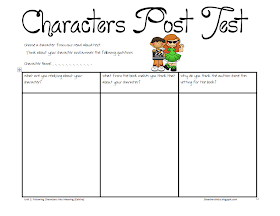Hello again darlings! I hope your year is off to a great start and you haven't felt the need to
strangle discipline any of your little young'ns yet! My kiddos are super sweet this year, but they are also super low... What to do..what to do. Well, instead of pulling my hair out, I am putting my Math Rotations to good use. I have been teaching math this way a couple years now, ever since my district adopted the Singapore Math Program. It works great!
Grouping Students
So..how does it work you ask? I pre-asses my students at the beginning of each unit. Make it easy on yourself and just give them a five question multiple choice sheet that covers the topics of the unit. That way you can QUICKLY assess their strengths and weaknesses. Next, I group them according to the results. Ex. All 5 correct: West (advanced)
3-4 correct: East
2 correct: South
0-1 correct: North (low)
I usually play around a little bit with the East and South groups to even out the number of kiddos. I also assign each student a partner who is in their group to play at the game station.
Rotations
Once I have all my little honey buns in groups, I teach them about the rotations they will be making each day. Each rotation is "supposed" to last for 15 mins. I have been "flexible" with my timing for each group, depending on their understanding of the lesson. There are four rotations: Teacher, Desk, Game, Fast Facts.
Grab a free rotations sign by clicking on the pic.
Teacher: this is when the kiddos come to me at the carpet for the actual lesson that is presented on their levels.
Desk: kiddos work on the practice assignment at their desks after the lesson (West groups starts here first since they are the advanced group. They get an assignment before the lesson.)
Game: I have a game for each skill. I usually keep the same game for one week so that I only have to explain it once. Check back, as I will be adding some of my games.
Fast Facts: I am lucky enough to have two computers with Internet access. (If you don't, get inventive. Maybe just have them take paper quizzes and have the partner grade it with an answer key right then.) I use the SELF CORRECTING TIMED tests from Multiplication.com! They have quizzes for addition, subtraction, multiplication, and division. I teach two kiddos how to log on and they are our Computer Experts. At the start of math, they pull up the page from our favorites bar and then the page is open the entire time. Kiddos click on the quiz they need. They type in their name and press START. Once they press start, the computer keeps track of the time. Kiddos type in the answer to each problem and press enter. I tell them to skip it and press ENTER if they have to think about it at all. When they finish, they press FINISHED (I know! Weird huh?) Now it will show them all the problems they missed and how much time it took to complete. To pass and be able to move on to a new test the next day, they can only miss ONE and their time must be 3 minutes of less. Now I tell them if it is a couple of secs over that is ok. When they finish they print the test and go grab it. (My kiddos have to hustle to the library.) Next, they make flashcards for any of them that they missed. While kiddos are waiting for the computer, they are practicing their flashcards from the previous day.
Accessing Quizzes: Put it on your favorite's bar.
Go to
Multiplication.com.
In case you ever get lost, it is under Resources-Online test and quizzes. Addition, subtraction, multiplication, and division are found on this page.
Here is where we keep our Fast Fact Folders that contain our flashcards and our previous quizzes. I always have kiddos start with the pretest so that at the end of the quarter, they can take the posttest and we can measure the growth. The bucket contains pens and index cards. No more running to go grab a writing utensil.
Sorry, I couldn't rotate the pic.
Here are the rules the kiddos came up with.

Does this help? Do you have another way?










































